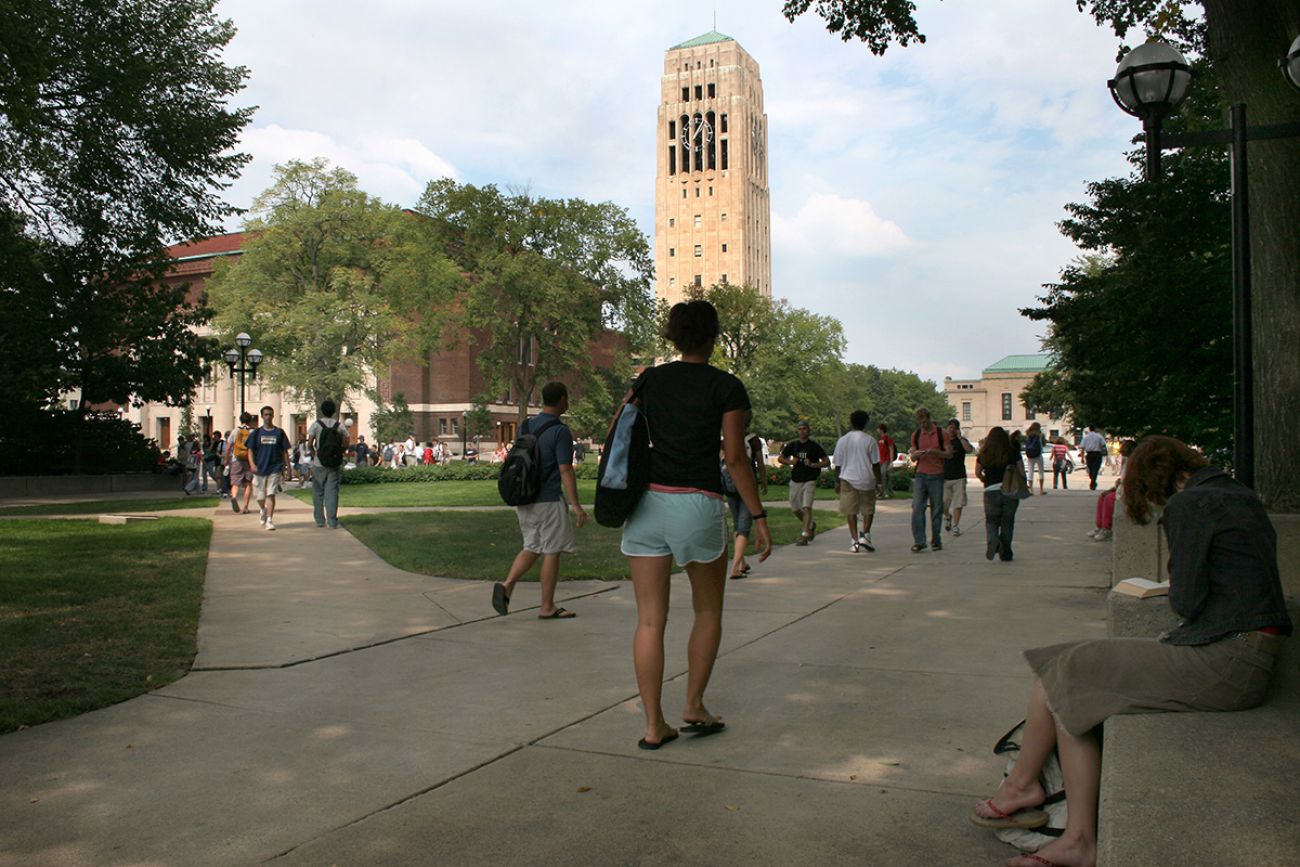For Michigan high school seniors: How to select the right college for you

Every spring, Oakland County-based college advisor Eva Dodds sees the same stress on the faces of high school seniors and their parents as they struggle to decide which college offer to accept.
Bridge Michigan talked to experts to help you navigate that choice, if you’re lucky enough to have one.
“It’s not about a mascot and school colors and all the things they were shown on the tour,” Dodds says she tells them. “They’ve got to take the emotion out of it.”
Related:
- Ferris State taps Grand Rapids Community College leader as likely new president
- Michigan House nixes SAT essay and removes scores from transcripts
- Central Michigan closes dorms as university enrollment drops
That’s easier said than done. If last year’s senior class is an indication, about 61,000 Michigan high school seniors (roughly 54 percent) are likely to enroll in a two- or four-year college for the fall. Most will make their decisions in the next month, and most will have a choice. Nationally, the average college-bound high school senior applies to three or more colleges, and gets accepted for admission to multiple schools.
Colleges and universities typically set a May 1 deadline for acceptance of offers. That means that over the next month, a lot of Michigan families will be at kitchen tables trying to decipher financial aid offers, calculating distances from home to dorm, and Googling residence hall cafeteria reviews.
Cost can vary wildly between schools, as can specific majors and campus settings.
Choosing where you’ll spend the next two to four years is a big decision, but it doesn’t have to be paralyzing, say two college advisors who spoke to Bridge Michigan. Here are their tips for students and families weighing college choices.
Talk about money
The average college graduate in Michigan now leaves school with $35,000 in debt. The cost of a degree varies a lot between campuses.
In Michigan, full-cost tuition (before room and board) at private Kalamazoo College is $54,000 this school year; at Central Michigan University, it’s $10,200.
Public universities, which receive financial support from the state, typically are less expensive to attend than private colleges, and two-year community colleges are far cheaper than four-year institutions.
Students often pay less than those sticker prices, but families need to look carefully at the financial aid offers made by schools. Those offers can be hard to compare because every college includes different things, like being certain whether the offer factors in student or parent loans.
“Think of it like you’re buying a car,” Dodds said. “Don’t make emotional decisions, because it’s not about emotions for the school. It’s all about the dollar signs and institutional needs. It’s about the number of beds they fill for what price. It’s a business decision that they’re making,” and it should be for families, too, she said.
Patrick O’Connor, CEO of Michigan-based College Is Yours college advising, says families should call the financial aid office of colleges to ask questions about the financial aid offer. Sometimes, students can get more aid just by making the call.
“Make sure you know what is a grant (money that students don’t have to pay back) and what is a loan (federal loans to students or parents that must be paid back),” O’Connor said. Oftentimes, federal loans are included in the tally of the financial offer, making the final price appear lower than it really is. “Ask them to explain the offer. “The first thing that is going to happen, they’re going to pull up the file and see if there’s any more money available.”
What’s important to you?
Make a list or spreadsheet with the things you want in a college experience. Is being in a big city important to you? Do you want to be close to outdoor activities? How close (or far) from family do you want to be? Then see how your schools compare on that list of priorities.
For students who are dead-set on a major – say, engineering or education – O’Connor says families should consider not only the college as a whole, but the quality of the specific program. A college that is more expensive might pay off with higher salaries after graduation.
“Ask about the starting salaries of graduates,” O’Connor suggested.
Compare graduation rates
A diploma is costly, but going to college and not graduating is even more expensive — students who drop out incur debt but don’t reap the benefits of high-paying jobs that require a degree.
Graduation rates vary significantly between schools. At Adrian College, 54 percent of students earn a degree within six years; at Eastern Michigan University, it’s 47 percent; at the University of Michigan’s Ann Arbor campus, it’s 93 percent.
Overall in Michigan, the six-year graduation rate at public and private four-year institutions is 52 percent.
Note those figures are the percent of students who earn a bachelor’s degree in six years not four. That means paying 50 percent more tuition than what families anticipate will be a four-year financial commitment.
At some schools, it’s common for students to take five years or more to earn a bachelor’s degree. That extra time means extra tuition.
For example, at Saginaw Valley State University, just 29 percent of students who enrolled in the fall of 2016 earned a degree in four years; among freshmen at Michigan State University campus that same fall, 71 percent graduated in four years.
Among Michigan’s public universities, half of students (51.5 percent) who enrolled in the fall of 2014 earned a degree in four years; 70 percent within five years and 77 percent within six years, according to the state’s Center for Educational Performance and Information.
Visit or call
Visit the colleges if possible to see what the campuses and the surrounding communities are like. If you can’t visit, many schools have virtual tours. Here are tours for CMU, Northern Michigan University and Oakland University.
Talk to current students. Are there students from your high school who graduated a few years ahead of you who are now attending the college you’re considering? If you are set on a major, call and ask if the school can connect you to a current student.
And don’t hesitate to ask to set up a phone call with a professor.
“This is not the time to be shy,” O’Connor said.
There’s no ‘one’ school for you
More prestige and higher tuition doesn’t always mean you’ll get a better college experience, Dodds says.
When students worry about getting into the “right school,” Dodds tells them to “look up where all the people they respect went to college. If you respect your teachers, where did they go? If you respect your doctor, where did they go?
“They usually look completely startled” to learn they didn’t all go to brand-name schools, Dodds said.
“It’s less convincing the student and more convincing the parents. But it’s not where you go, it’s what you do when you’re there.”
Michigan Education Watch
Michigan Education Watch is made possible by generous financial support from:
Subscribe to Michigan Health Watch
See what new members are saying about why they donated to Bridge Michigan:
- “In order for this information to be accurate and unbiased it must be underwritten by its readers, not by special interests.” - Larry S.
- “Not many other media sources report on the topics Bridge does.” - Susan B.
- “Your journalism is outstanding and rare these days.” - Mark S.
If you want to ensure the future of nonpartisan, nonprofit Michigan journalism, please become a member today. You, too, will be asked why you donated and maybe we'll feature your quote next time!





